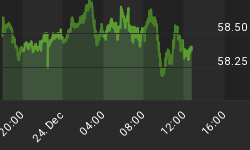Below is an extract from a commentary originally posted at www.speculative-investor.com on 17th April, 2008.
Since the birth of the floating (sinking?) currency regime at the beginning of the 1970s, the best bull market of any decade has always continued until the beginning of the next decade. To help illustrate what we are talking about we present, below, three charts that represent the best bull markets of the 1970s, 1980s and 1990s, respectively.
The best (most powerful) bull market of the 1970s was in commodities, with a particular focus on precious metals and oil. Therefore, for the first of our charts we have chosen one that shows gold's performance during the 1970s and the first three years of the 1980s.

The next decade (the 1980s) was dominated by Japan, so our second chart shows how the Nikkei225 Index performed throughout this decade and during the first three years of the 1990s.

Finally, the best bull market of the 1990s was in the US, with a particular focus on the NASDAQ. Our third chart therefore reveals the NASDAQ's performance during this decade and the first three years of the ensuing (current) decade.

Notice that in each case the bull market continued until January-March of the 'zero year' -- January-1980 for gold, January-1990 for the Nikkei, and March-2000 for the NASDAQ -- and there was a very strong advance during the final 12-18 months of the decade. This could have relevance to the present day given that we are close to entering the final 18 months of the decade.
The best bull market of the current decade has been in commodities, with a particular focus on metals and energy. The emerging-market bull is running a close second. The "Decade Cycle" defined above therefore projects a lot more strength in the commodity world between now and the end of 2009.
We are positioned for the aforementioned strength, although we expect a shakeout to occur before the final advance gets underway.
By the way, the best bull market of the next decade will probably also be in gold and commodities. This is because long-term bull markets never end until gross over-valuation is achieved, and gross over-valuation is unlikely to be achieved within the next 2 years. During the next decade there should, however, be more emphasis on gold than on the industrial commodities because by then the defective nature of the official money will be more widely understood.
















